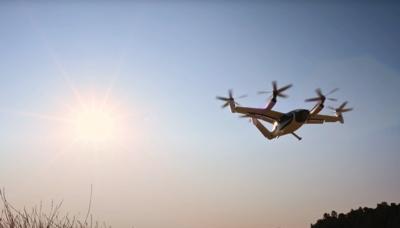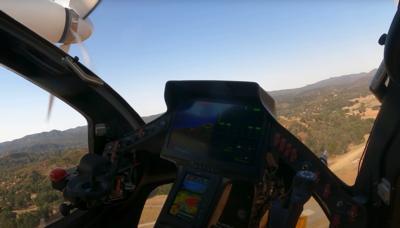Tue, Feb 22, 2022
EVTOL Manufacturer Suffers Setback in Certification Process, Can it Rebound?
Joby Aviation's flight test accident made waves after breaking the company's stride over recent months, marking the first real unscheduled problem for the eVTOL manufacturer.

The prototype in question has been said to be used for high-speed stability testing, a conjecture supported by flight tracking data showing a speed over 270 mph not long before the crash, a fair bit faster than its nominal top speed of 200 mph.
News broke of the incident after a mandatory SEC report was made saying as required by law to alert investors to unscheduled corporate events. The report was somewhat understandably vague, merely saying that "one of its remotely piloted, experimental prototype aircraft was involved in an accident during flight testing at our remote flight test base in California." The company recently caught the eye of some when their paperwork requesting approval for unmanned, remotely-piloted flights. Their decision to forego a pilot could well have saved a life in this instance.

Pulling some of the flight tracking data for the N-number registered to the company paints a likely picture of what was happening: Evaluation of their prototype at speeds beyond their anticipated maximum, required performance for certification. Those familiar with FAA certification recall that aircraft are required to be capable of flying at 1.3 times their stated top speed, which would put the aircraft's velocity right in the neighborhood of the requirement just before dropping off of tracking.
The requirement ensures aircraft are designed with a valuable safety buffer. Going 30% beyond a "never exceed" speed may not be as common in a multirotor VTOL aircraft, but it's still well within the realm of reason for standard operations in descents. The lessons learned by Joby will hopefully go towards keeping their second prototype in the air - an aircraft whose birth was fortuitously timed for this occasion. Joby only recently announced a second pre-production prototype aircraft to ensure the continuation of their work on certification.
More News
He Attempted To Restart The Engine Three Times. On The Third Restart Attempt, He Noticed That Flames Were Coming Out From The Right Wing Near The Fuel Cap Analysis: The pilot repor>[...]
Make Sure You NEVER Miss A New Story From Aero-News Network Do you ever feel like you never see posts from a certain person or page on Facebook or Instagram? Here’s how you c>[...]
From 2009 (YouTube Edition): Leading Air Show Performers Give Their Best Advice for Newcomers On December 6th through December 9th, the Paris Las Vegas Hotel hosted over 1,500 air >[...]
Aero Linx: NASA ASRS ASRS captures confidential reports, analyzes the resulting aviation safety data, and disseminates vital information to the aviation community. The ASRS is an i>[...]
“For our inaugural Pylon Racing Seminar in Roswell, we were thrilled to certify 60 pilots across our six closed-course pylon race classes. Not only did this year’s PRS >[...]
 NTSB Final Report: Rutan Long-EZ
NTSB Final Report: Rutan Long-EZ ANN FAQ: Turn On Post Notifications
ANN FAQ: Turn On Post Notifications Classic Aero-TV: ICAS Perspectives - Advice for New Air Show Performers
Classic Aero-TV: ICAS Perspectives - Advice for New Air Show Performers ANN's Daily Aero-Linx (06.28.25)
ANN's Daily Aero-Linx (06.28.25) Aero-News: Quote of the Day (06.28.25)
Aero-News: Quote of the Day (06.28.25)




